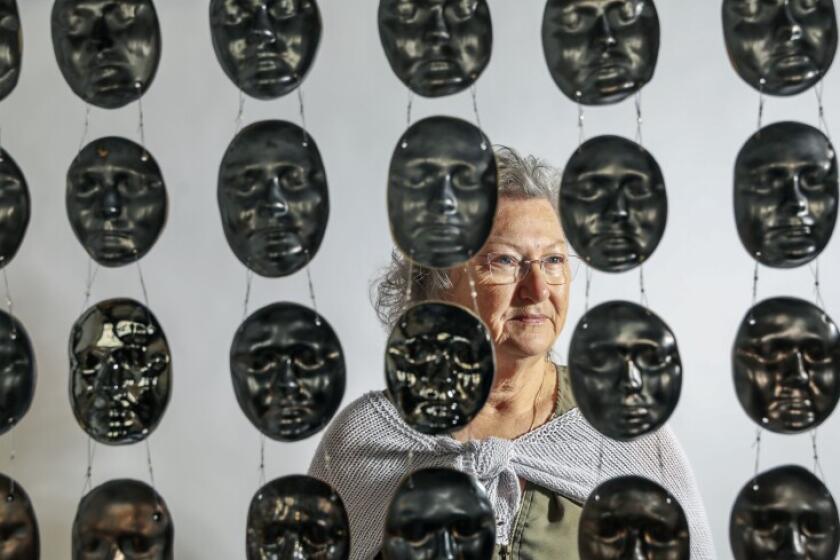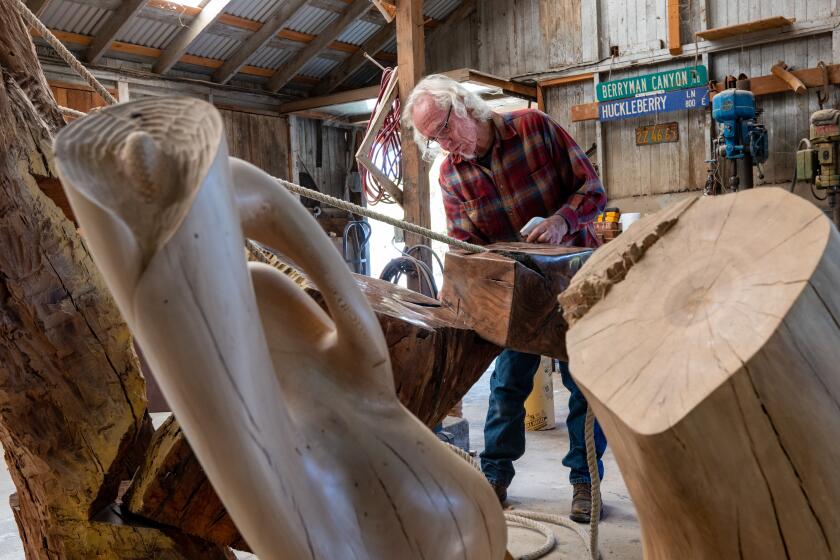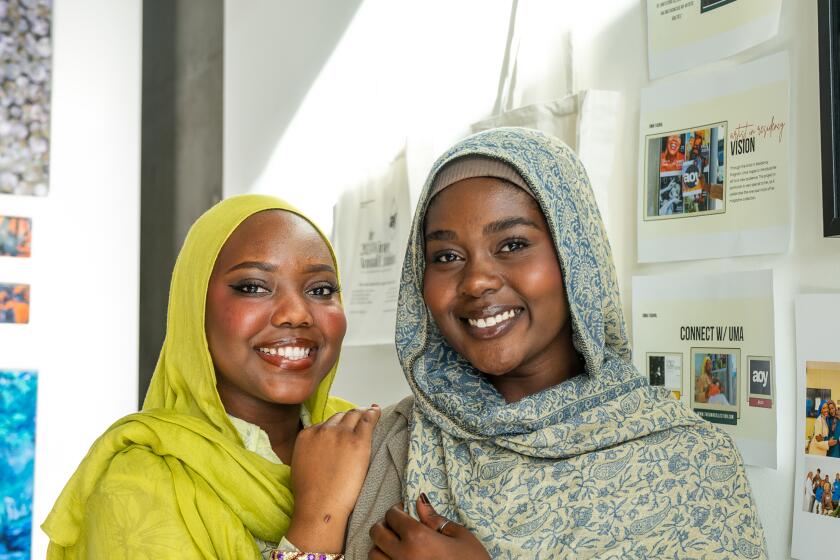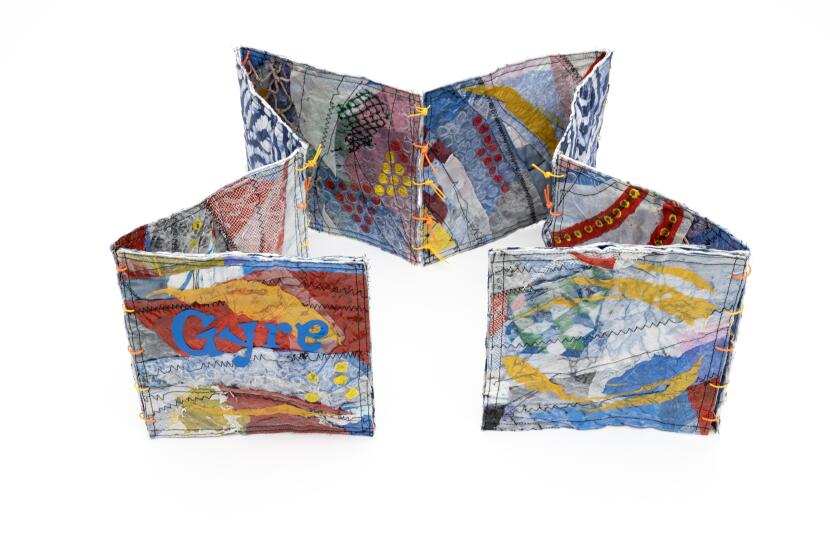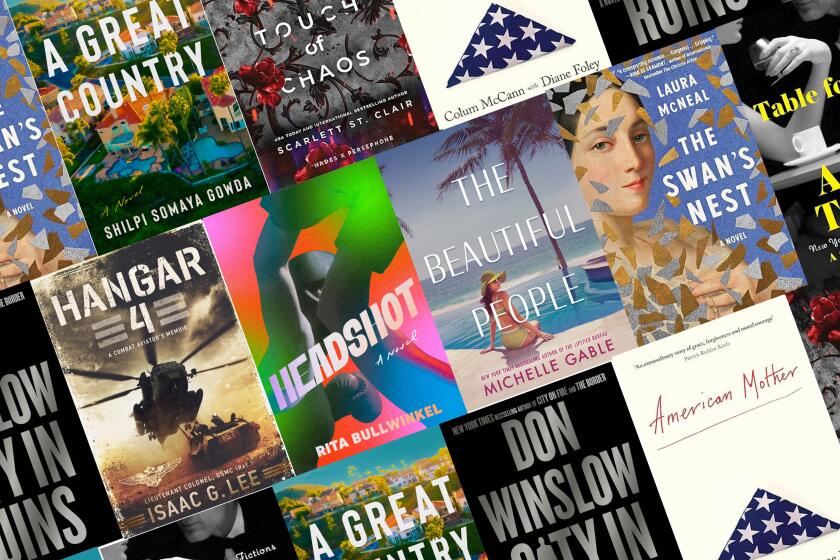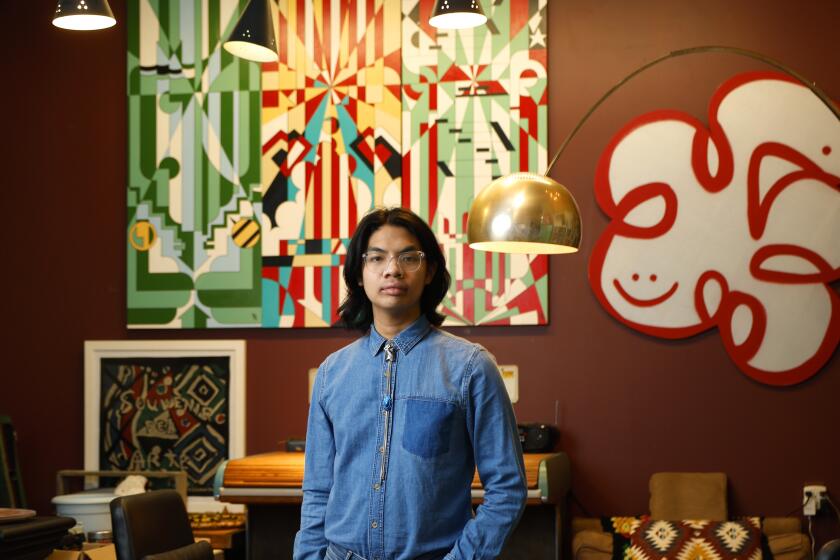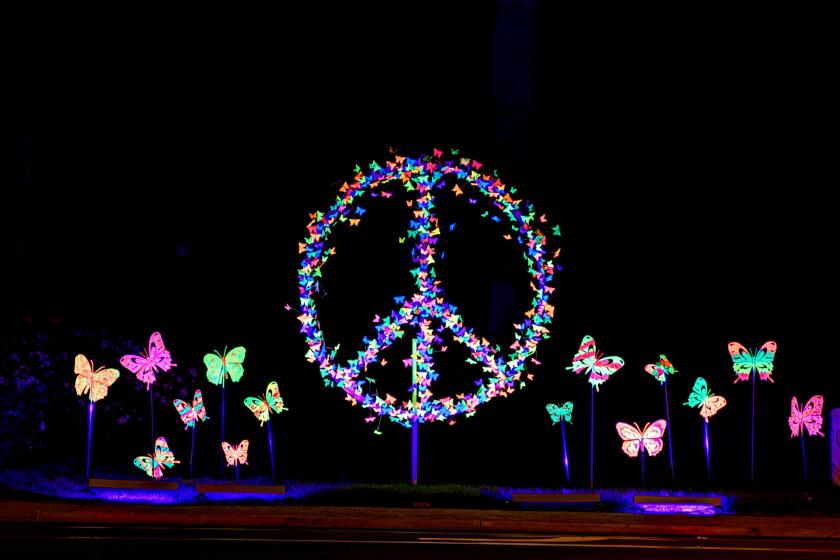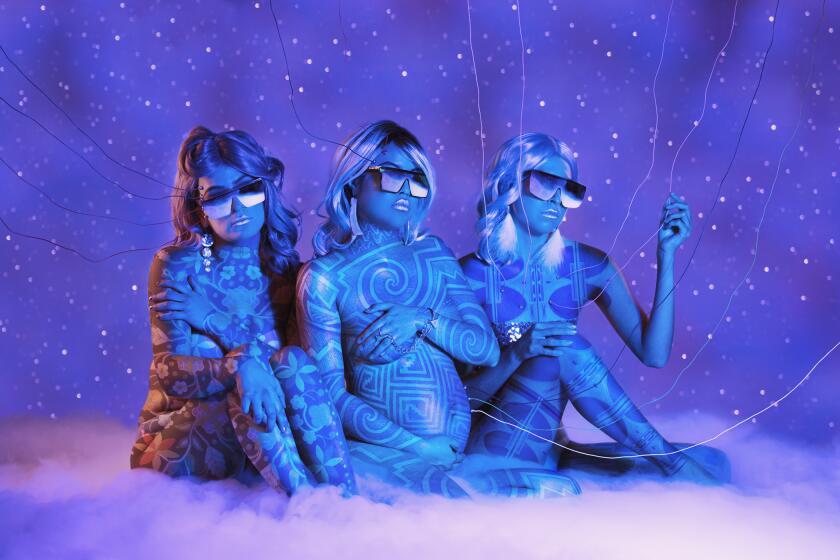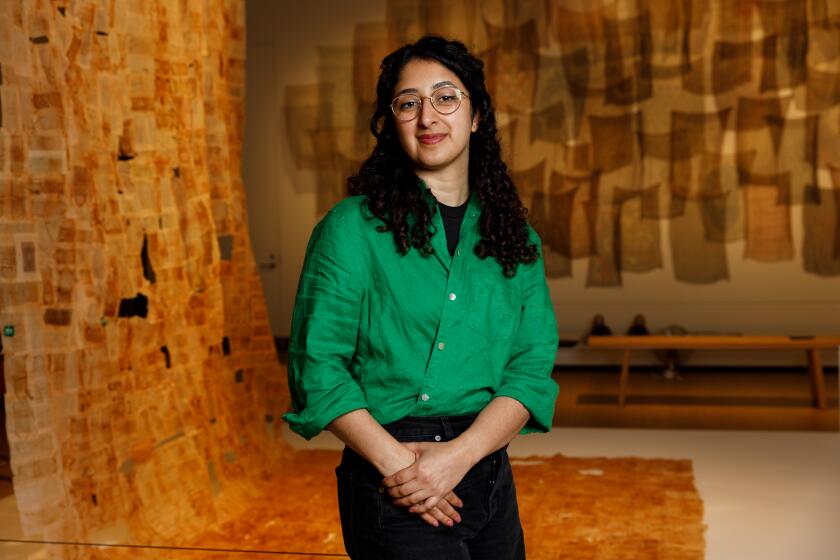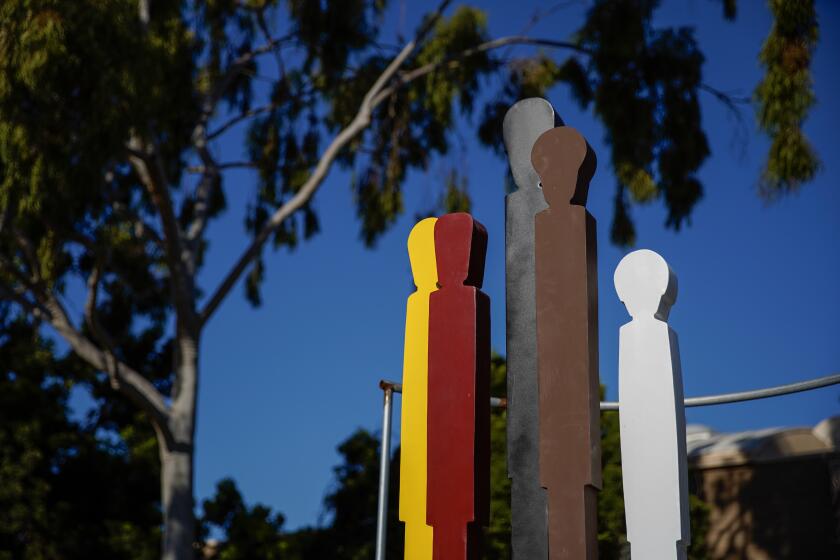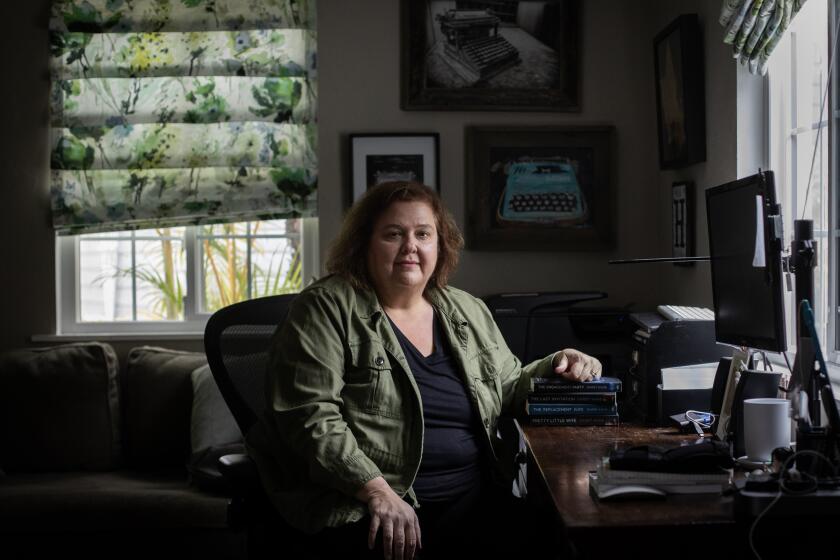Intimate, iconic photos of Frida Kahlo focus of Nickolas Muray exhibit in Escondido
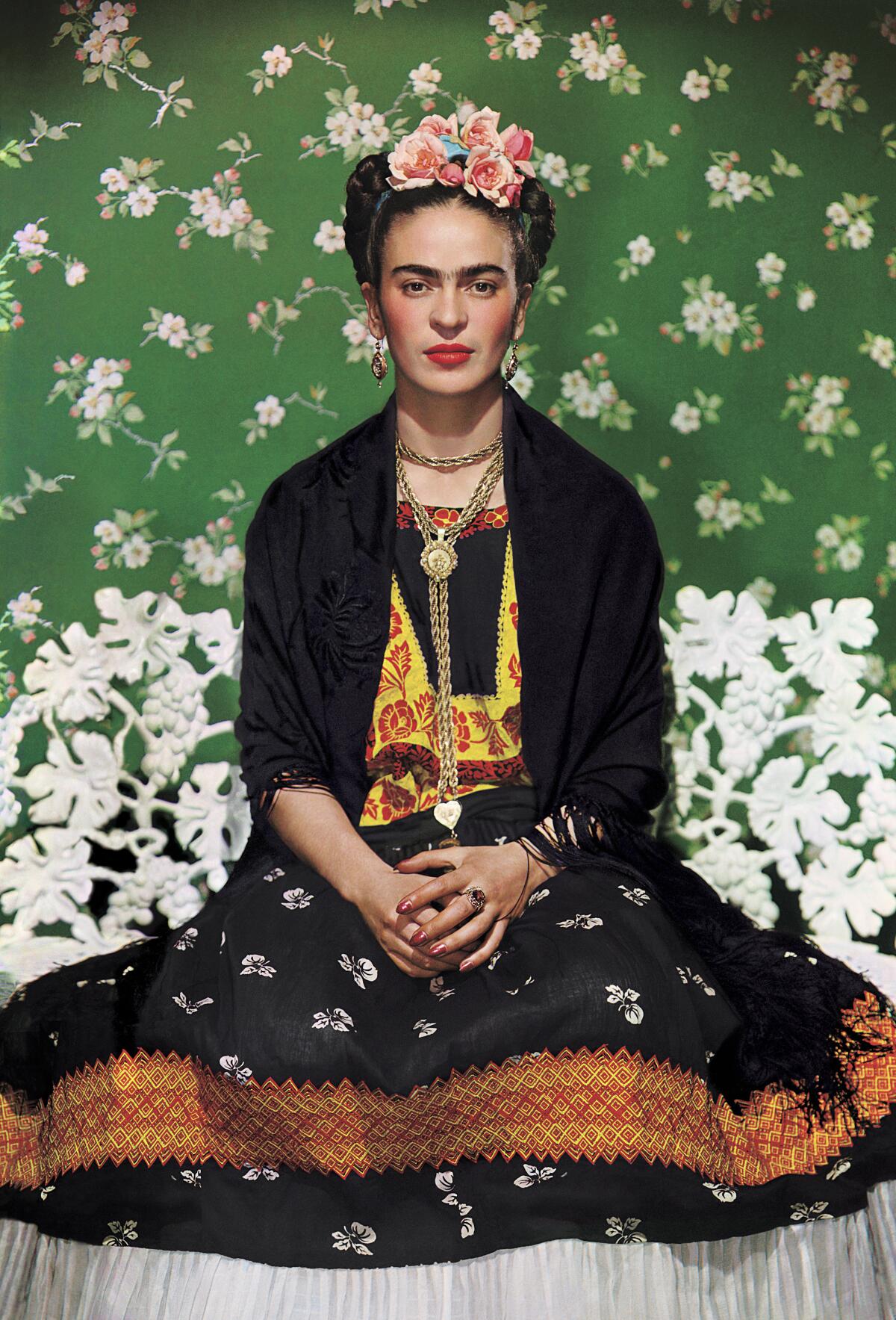
A traveling exhibit at California Center for the Arts, Escondido examines the Mexican artist through the lens of her friend, mentor and sometimes lover
These days, Frida Kahlo is inescapable.
The Mexican artist’s work, image and influence has become ubiquitous over the past few decades. She has unquestionably become an icon, her likeness plastered on everything from mugs and T-shirts, to more irreverent items like chocolate bars and Barbie dolls.
But when we stop to envision some of the seminal portraits of Kahlo, chances are they were taken by the photographer Nickolas Muray. The Hungary-born, New York City-based photographer took dozens of photos of Kahlo after their first meeting in 1931. After that initial acquaintance and over the next decade, the two would become close, even intimates, and remained friends until her death in 1954.
“People who know about Frida will walk into the museum and see a minimum half-dozen images of her that are so iconic,” says Beth Solomon Marino, the director of museum and visual arts at the California Center for the Arts, Escondido (CCAE). “And then there’s this realization of, ‘Oh, the same photographer was taking all of these pictures of her over these 10 years.’ They had this relationship. It wasn’t just a one-off where this great photographer snapped this picture that we all know. Even I didn’t know all these Frida photos I think of were all taken by Muray.”
Most patrons will already be familiar with a few of the pictures of Kahlo hanging within “Frida Kahlo: Through the Lens of Nickolas Muray,” a traveling exhibition opening Saturday at CCAE. There’s the seminal image of Kahlo sitting on a white bench in front of a green floral background — meditative, almost defiant, with roses pinned into her hair. There’s also the portrait of her, taken in 1939, wearing a vibrantly magenta rebozo (a shawl-like wrap) — stoic, celestial, her arms crossed.
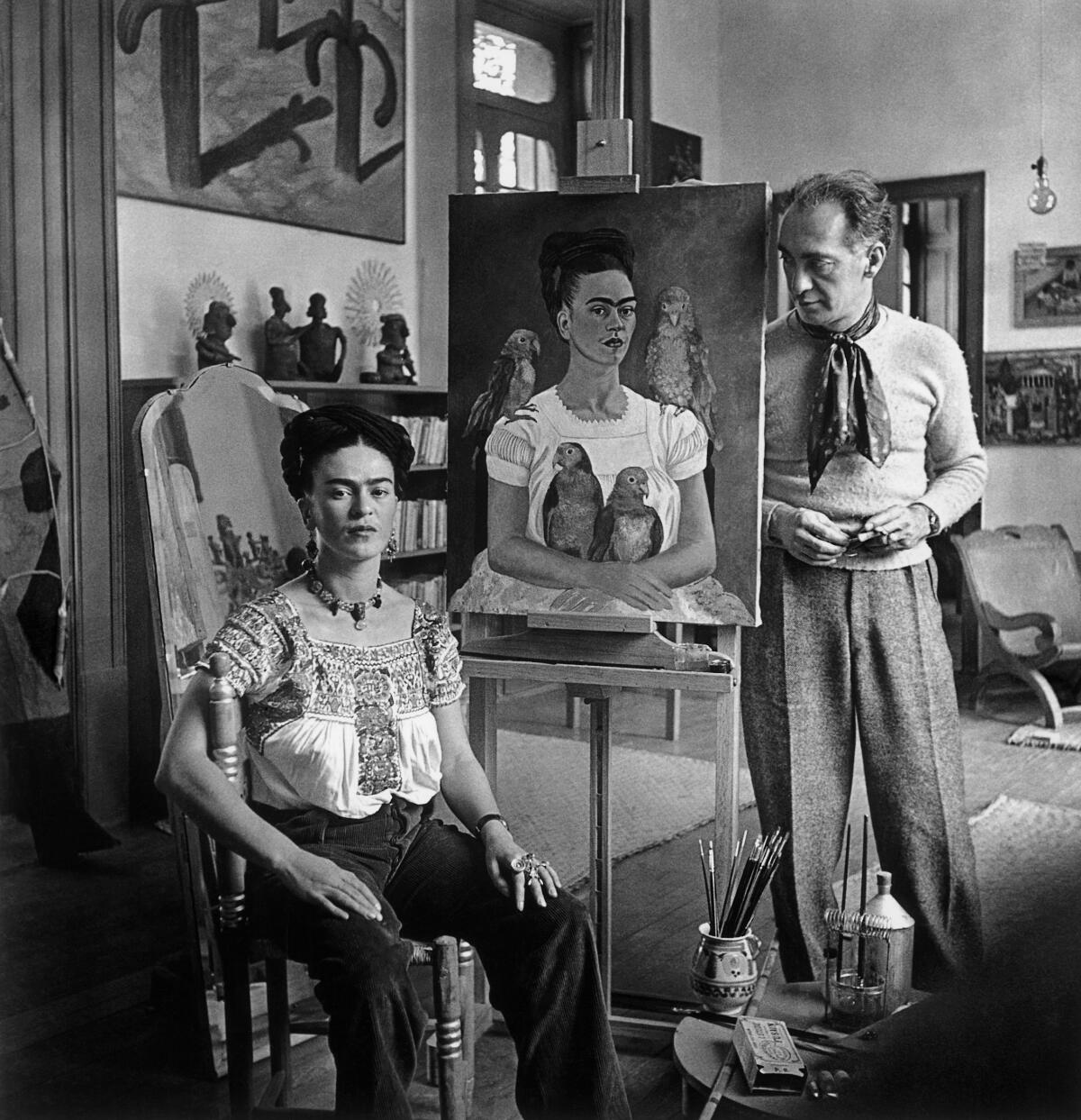
However, the exhibition also includes more than one hundred other images taken of Kahlo by Muray. These include candid shots taken in more private, intimate moments, as well as group photos taken at parties and gatherings. Besides the photographs, there are also reproductions of various Kahlo paintings, as well as letters exchanged between Kahlo and Muray. Taken all together, the exhibition offers the viewer a sense of how the two artists, despite working in different media, came to influence one another. Both within their respective art and in becoming lovers, the two developed something of a symbiotic relationship, each igniting the other’s creativity.
“They had this very complex, but cerebral relationship that I was kind of stunned by,” says Cynthia Graves, the founder and director of GuestCurator Traveling Exhibitions, which circulates the “Through the Lens …” exhibition. “When I read their letters, I saw how they were working off one another. And in the photographs, you can see that as well.”
Both Graves and Solomon Marino point out that the exhibition’s main aims are twofold: First, to give an overview of Kahlo and Muray’s unique relationship and, second, to bring attention to Muray himself. The exhibition was first organized by the Nickolas Muray Archives and offers a startling overview of one of the most revered photographers of his time, albeit through one of his most beloved muses. Besides his portraits of Kahlo, he also took pictures and portraits of everyone from Marilyn Monroe and Babe Ruth, to F. Scott Fitzgerald and Franklin D. Roosevelt.
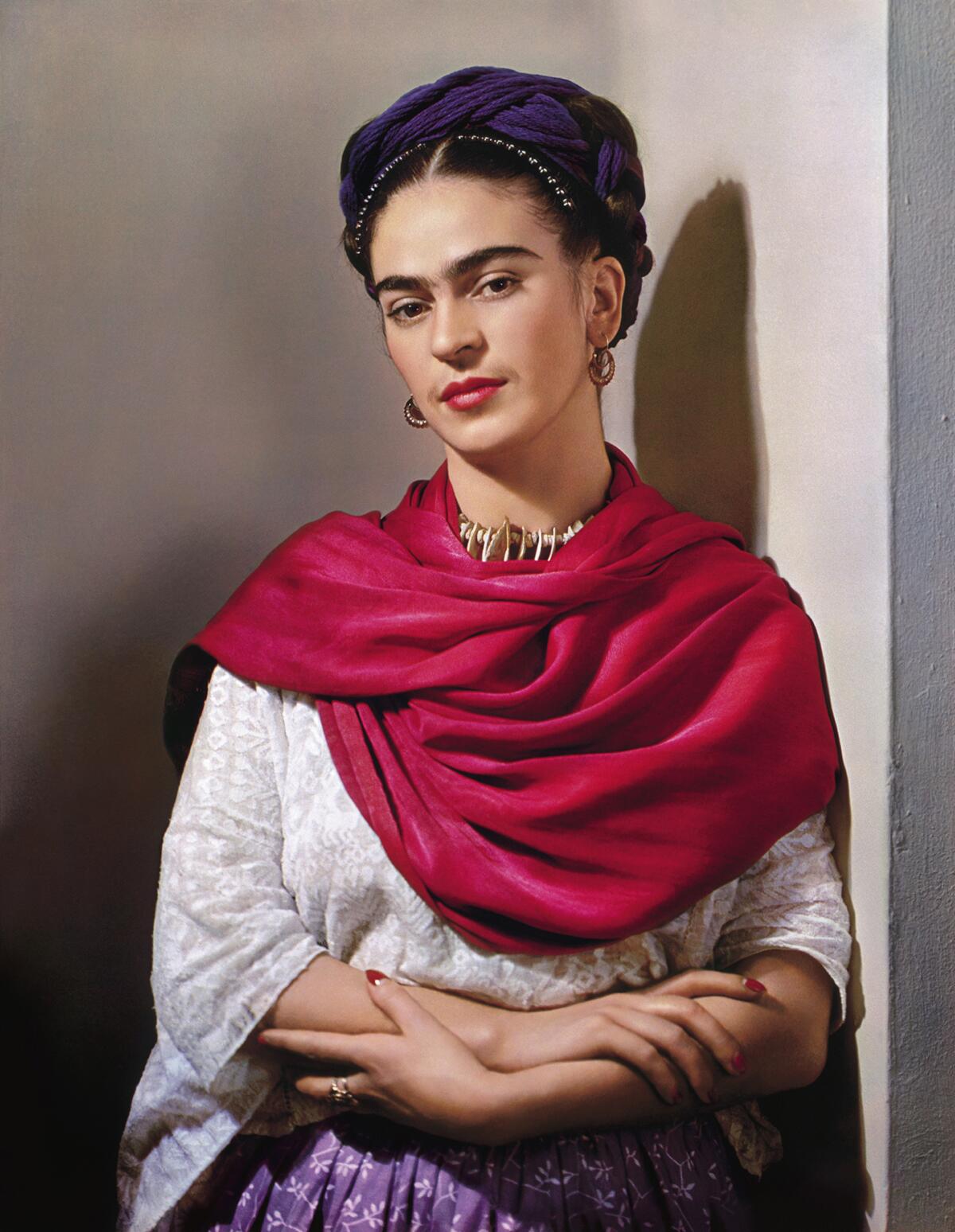
“That was his job, but he also knew those people,” Graves explains, pointing out that Muray was also an Olympic medalist for fencing and developed revolutionary photographic techniques. “So because he knew his subjects, he was able to capture these very personalized images with this method that was very unique to him.”
“The exhibit is as much about him as it is about her,” Graves continues. “She’s an icon and everyone knows her. Bbut almost nobody knows about Nickolas Muray and he was such an intriguing person.”
What’s more interesting is that many of the Kahlo photographs in the exhibition were discovered after Muray’s death in 1965, undeveloped and stored away in a trunk as negatives.
“Once they realized what they had, they tried to figure out what to do with them,” says Graves. “And then, slowly, things began to develop from there.”
Pun intended.
Of course, at this time of discovery, Kahlo and her work had not reached the level of status it has today. It wasn’t until the 2000s that the Muray Archives curated an exhibition of the images and letters. It has since been expanded to include more information, photos and items, and has traveled to over a dozen institutions all over the world. The CCAE iteration of the exhibition will also include some Kahlo ephemera that was purchased by a San Diego collector in the 1980s. These include clothing, a necklace, a personal phone book and even a small calaca skeleton craft that once belonged to the artist.
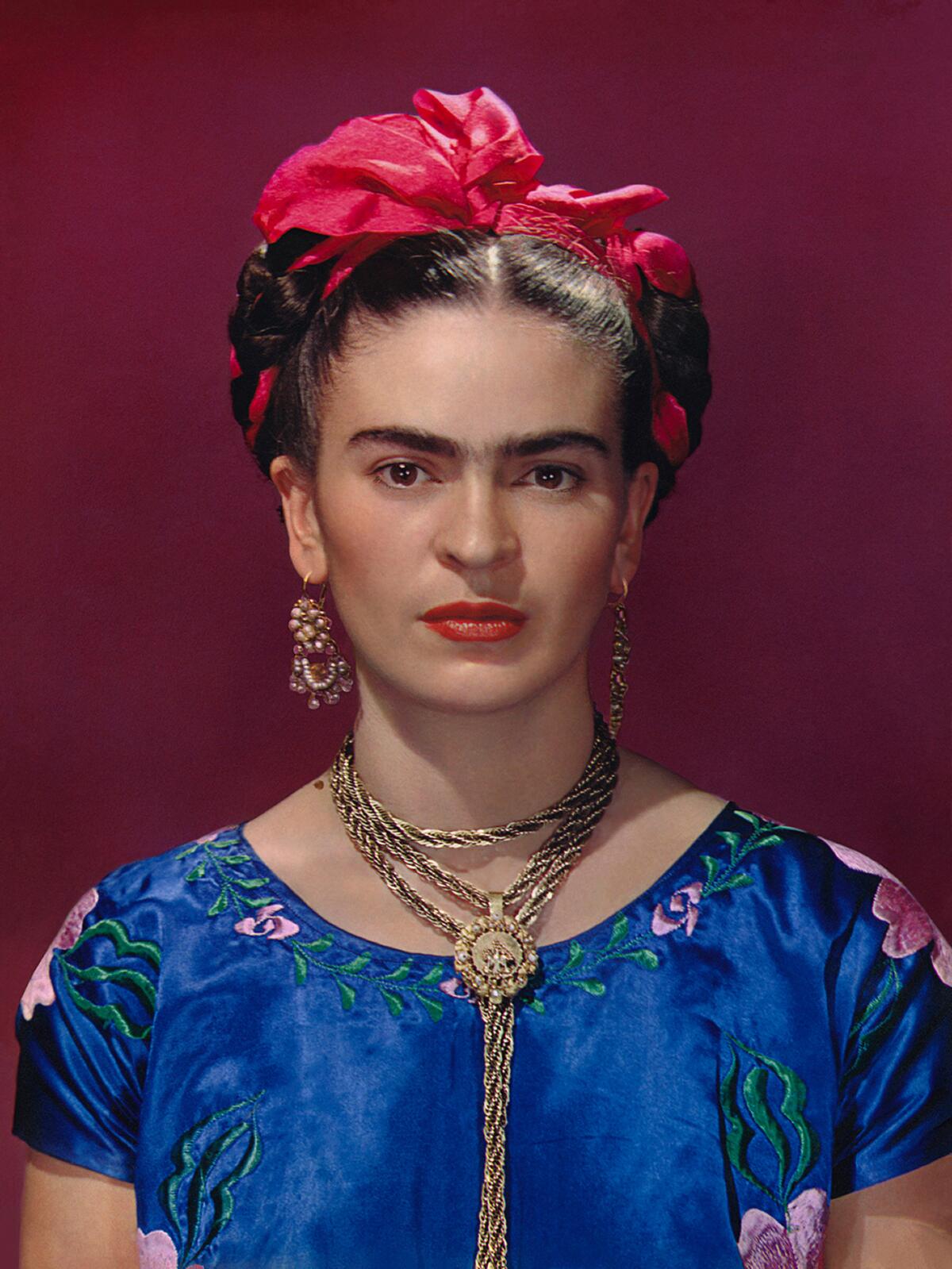
“For me, it’s these items, along with the letters and coupled with the images, that you really feel like a voyeur in some ways.” says Solomon Marino. “You know that these letters and items weren’t meant to be put in a museum, but here they are. It really makes you fall in love so much more with the photographs. Knowing the story behind them, behind their love, you look at the photos differently when you know that story.”
“They were both extremely extroverted people,” Graves adds. “They might actually be proud of those letters, that they shared that connection together. The letters take that physical relationship they had off-and-on for 10 years into another dimension. They show how they actually worked and respected one another, how they helped each other.”
So while the main subject of “Frida Kahlo: Through the Lens of Nickolas Muray ‘’ is iconic, it’s Muray’s keen eye and deliberate posing that offers a distinct window into Kahlo.
As with some of the best photographers, he manages to both ground his muse (a casual photo of her, hair down, lying face down in a bed) and add to her legend (the portrait of her, brush in hand, in front of her masterful 1939 painting, “The Two Fridas”). After seeing the exhibition, the viewer could certainly come away with the sense that while Muray may not have directly influenced Kahlo’s art, he almost certainly helped cultivate her image, both among the public and within the artist herself.
“They sort of fed off each other, just like artists do,” says Graves. “They were both such passionate, totally alive people. It must have been an energy that was beyond anything I could imagine.”
‘Frida Kahlo: Through the Lens of Nickolas Muray’
When: Opens Saturday and runs through Nov. 5. Hours, 11 a.m. to 5 p.m. Wednesdays through Saturdays, 1 p.m. to 5 p.m. Sundays
Where: California Center for the Arts, Escondido, 340 N. Escondido Blvd., Escondido
Admission: Free-$12
Phone: (800) 988-4253
Online: artcenter.org
Combs is a freelance writer.
Get U-T Arts & Culture on Thursdays
A San Diego insider’s look at what talented artists are bringing to the stage, screen, galleries and more.
You may occasionally receive promotional content from the San Diego Union-Tribune.

